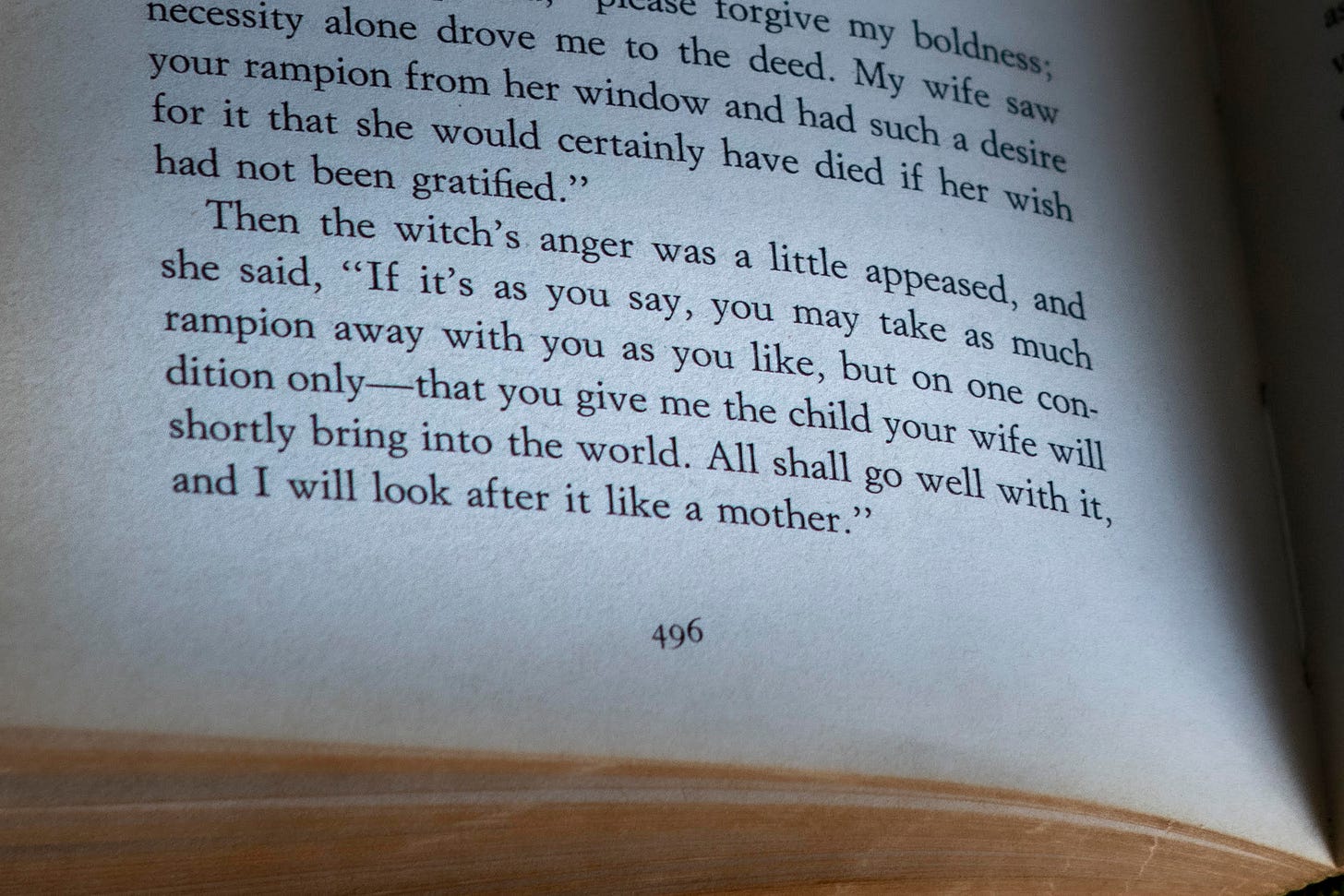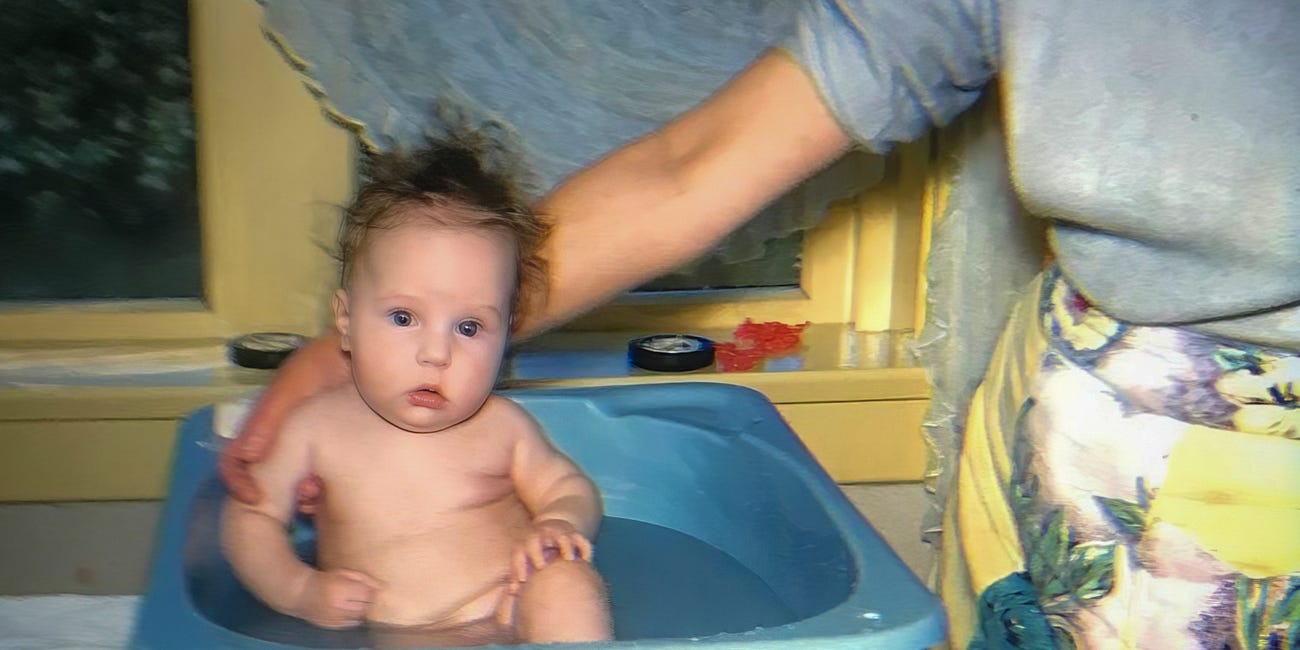The Rapunzel Doctrine: Adoption, Appetite, and the Locked Tower
What the 'mother-figure' of Gothel says about adoption.
The tension between caregiving narratives and lived consequences is central to the politics of adoption, health, and identity, and to the stories we tell to justify the permanent identity erasure of a non-consenting
child.
Reading the many submissions from adoptive parents to the proposed change in the availability of adoption information in New Zealand was a crash course in the old language of power, identity, and control. You can read about it here.
Many of the submissions focused on adoptive parents’ feelings and entitlements.
Somehow, all this reminds me of Rapunzel.
In the fairy tale, a poor pregnant mother is hungry. She craves the rampion growing in her neighbour, Gothel’s, garden.
Her husband climbs the wall into the garden to pick salad greens to satisfy her cravings. Gothel catches and threatens him unless he agrees to a trade: all the food his wife can eat in return for her newborn child.
“All shall go well with it, and I will look after it like a mother.” Gothel
The baby is born, and Gothel takes the newborn to satisfy her maternal appetite.
She names the child Rapunzel, after the plant her mother desired (another form of appetite).
In stamping Rapunzel with the symbol of her mother’s uncontrollable craving, Gothel subliminally reminds us that only a weak woman loses her child.
In some tellings, we catch glimpses of her longing for her child. Yet Rapunzel’s nameless, dispossessed mother haunts the edges of the story—living in a hut beside Gothel’s castle but fading from view, her purpose in the narrative fulfilled and swiftly erased.
While the Rapunzel fairy tale proceeds as fairy tales do, as an allegory of lust, banishment and rescue, the inciting incident of child abduction and its long shadow is relegated to no more than an entry point.
Yet, despite her power to claim this child as her own, Gothel fears what lies beyond her control: Rapunzel’s yearning for her mother.
Beneath it all, Gothel, who is an archetype of a childless adopter, remains haunted by the fear that the dispossessed mother might one day return to reclaim her daughter.
And the tower that imprisons Rapunzel?
It symbolises Gothel’s determination to keep Rapunzel for herself. But it also represents the power of the state to take a nonconsenting person and lock them away from their family and history forever.
The right to ‘lock away’ (legally and physically) is at the heart of human adoption.
I once asked my adopter if she could have given away her child, conceived and carried in her body. She shuddered. The idea was unthinkable. The honest shudder told the deeper story.
The belief that my mother, and, by extension, the mothers of most adopted people, are a different type of woman.
A woman indivisible from her rampant desires, a loose woman who has broken the social contract.
A woman who deserves to lose her child.
This is the silent foundation beneath the adoption story - a narrative society teaches us to accept as an act of love, a win-win for everyone involved.
Gothel lives on in the machinery of modern adoption. She is woven into the laws that sever and seal records, falsify birth certificates, and erase history.
The tower remains, rebuilt as a bureaucracy empowered to take a nonconsenting infant to meet unrelated, better-resourced adults’ emotional and physical needs.
The psychological impact of maternal separation is also discussed in the column.
Maternal Separation: The baby mice, monkeys, rats, and giant pandas were not okay.
https://drbarbarasumner.substack.com/p/maternal-separation
If this resonates…
Adoption Deconstructed
Deep research and essays grounded in lived experience
Advocacy for truth and adoptee-centred justice
Access to footnoted versions of all major posts
Coming soon to Adoption Deconstructed:
The Wrong Royal Commission – What New Zealand’s inquiries miss about state-facilitated and sanctioned adoption.
What do you think?
Was Rapunzel the first pro-adoption story you read without realising it was gaslighting? Leave a comment or share your own story below.






“The right to ‘lock away’ is at the heart of human adoption.” This resonates. I think about this as the “warranty.” That is, my adoptive parents paid a sum of money and, in exchange, they were promised their “own” child. And I do mean “own” in all its definitions. If, at any point in their lives, the adoptee does not perform as warranted, it is a breach in the eyes of our adopters. A failure to perform as promised. Breach of lifetime warranty.
When I was a child I did not know I was adopted and I was obsessed with the Rapunzel story. I was obsessed with her beautiful hair. I never thought Gothel came out of the story looking good in any way. She seemed selfish, scary and mean.